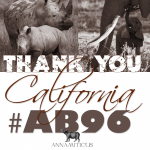
In the latter part of 2013, the wildlife trafficking crisis crossed over to pop culture, with rhino horn and ivory trafficking taking center stage of one of Marvel Comics’ most famous heroes: Wolverine.
Throughout my childhood, some of the world’s most serious issues were editorialized in comics. Dennis O’Neil and Neal Adams took on heroin addiction in a legendary Green Lantern/Green Arrow run. Stan Lee and Jack Kirby created the X-Men to showcase the world’s issues of prejudice and bigotry. Wildlife trafficking is very serious issue in my heart and I am happy to see it brought to comics.
Marvel Comics created a two-part story in Savage Wolverine #12 and #13. One of the industry’s most gifted artists, Phil Jimenez, illustrated the books. Jimenez coauthored the tale with Scott Lope. Wolverine was the perfect choice for the protagonist. He is a hero more in comfort with nature than the human race. He is also a fan favorite in both graphic novels and the silver screen.
The creators portrayed this real-life horror in convincing fashion. The first issue did a great job of capturing the brutality of a wounded, dehorned rhino. There was also a scene with a barbaric vault that stores stockpiled rhino horn and ivory. Along the way, Jimenez reveals important aspects of the rhino horn and ivory trade. The story starts with military precision of wildlife trafficking gangs and continues with highly organized smuggling routes to the imaginary Asian nation of Madripoor. Once the rhino horn and ivory arrives in Asia, the story shows that it is just another organized crime racket that has become big business. There is even a reference to the phony cancer cure! The tale sheds light on the destructive wildlife trade and the potential endgame of extinction.
Comics fans will love the story, as it goes back over 80 years and embraces an unknown part of Wolverine’s distant past. For me, the story is important for two reasons. First, it is wonderful that the rhino horn and ivory trade problem will be brought to the attention of so many readers. Secondly, it reminded me about why Annamiticus was formed. When we started out with Saving Rhinos in late 2007, the world was a very tough place. Financial panic was beginning to grip the globe and there was great despair everywhere. Folks asked why we wanted to help wildlife when there was more serious human suffering. Why turn our attention to far away places in Africa and Asia? The answer seemed simple. Wildlife is our planet’s precious heritage. It not a resource to be exploited for profit or gain. If human race is the Earth’s dominant species, then it is our obligation to protect and preserve wildlife.
I send a special thanks to Phil Jimenez, Scott Lope and Marvel Comics for stepping up for wildlife. The tale shows that wildlife crime is global issue and everyone can help.
This article originally appeared in the December 2013 issue of The Annamiticus Quarterly.




